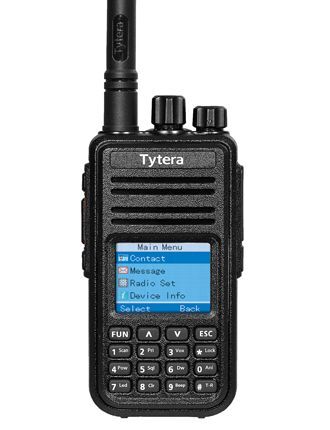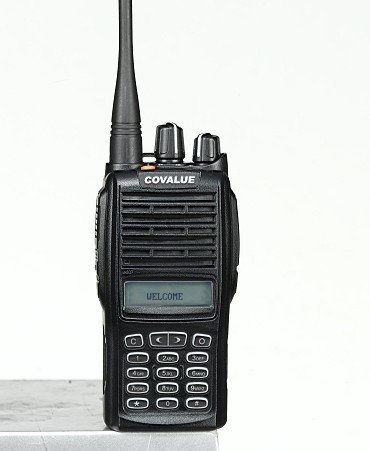Category Archives: Connect Systems
Connect Systems nieuws

I thought I would give a status update of what Connect Systems is doing.
CS580: This radio was designed to be in direct competition to the MD380 radio but have the advantage of being much easier to use because of a few new features we added. We sold over 100 radios before it was officially released and we have about 200 radios left before we have to order more. It takes at least 30 days from placing an order to receiving more radios. We have already received follow on orders from some of the people who have ordered the first batch of radios. It cost $130 each.
CS750: We reduced the price from $239 to $180. At this price, it is a competitor to the Tytera products but you get a better radio with more features. After the CS760 is stabilized, we will be adding more features to this radio as well as fixing any remaining problems.
CS760: This is the follow on to the CS750 series of radios. Besides having the features of the CS750, it has optional Bluetooth, GPS, Man Down, and vibrator. Its IP67 rated (waterproof) and has a color display. It will have the ability to be compliant with ETSI Standard Tier III. Being a new radio with new features now and more new features in the future, you can expect this radio to have frequent firmware updates both to fix bugs and to add new features. It was originally scheduled to ship December 1, then December 10, and now December 19. The basic radio cost $299 and with all the options it cost $399.
CS800: This is our single band UHF mobile (Available in VHF). After the CS760 is stabilized, we will be adding more features to this radio as well as fixing any remaining problems.
CS800D: This is a dual band CS800. I expect the VHF band to be the same as the CS801 and the UHF band to be extended to 512 MHz. It is initially going to be released as an amateur product but later we will get it part 90 certified. We do not have our cost yet but I am hoping the selling price will be $100 more than the single band CS800. We have preliminary schematics and we have a target of getting a working sample shipped by January 23, 2017 to show at the various amateur shows and production starting about two months later.
CS108G+: This is a Xiegu X108G with custom firmware to include a spectrum analyzer and an ID Timer. It covers all the HAM bands from 160 meters to 10 meters. We expect to get our first shipment next week.
CS7000/CS8000: This is a single band multi-protocol (DMR, DSTAR, Analog, and others) radio. We are still working on it but I will not give a definite date for initial shipments.
Jerry Wanger KK6LFS
De CS7000 komt er toch!
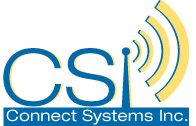 Na lange tijd is er dan nu weer nieuws over de CS7000 van Connect Systems.
Na lange tijd is er dan nu weer nieuws over de CS7000 van Connect Systems.
In een bericht ontvangen van Jerry Wanger waarin hij aangeeft dat deze DMR, Dstar en analoge portofoon er toch gaat komen is dit te lezen. Levertijden worden niet genoemd maar hardwarematig schijnt de portofoon al gereed te zijn. Er wordt nu hard gewerkt aan de software. Hieronder het bericht van Jerry.
The original hardware design of the CS7000 was completed over a year ago and was based on the CS750. To successfully complete this project Connect Systems had to have a stable CS750 and the cooperation of Covalue, the designer of the firmware and hardware of that radio. This plan ran into two issues. The first issue was the CS750 took over a year longer to complete than expected and the second issue was not being able to get the full cooperation of Covalue in the design.
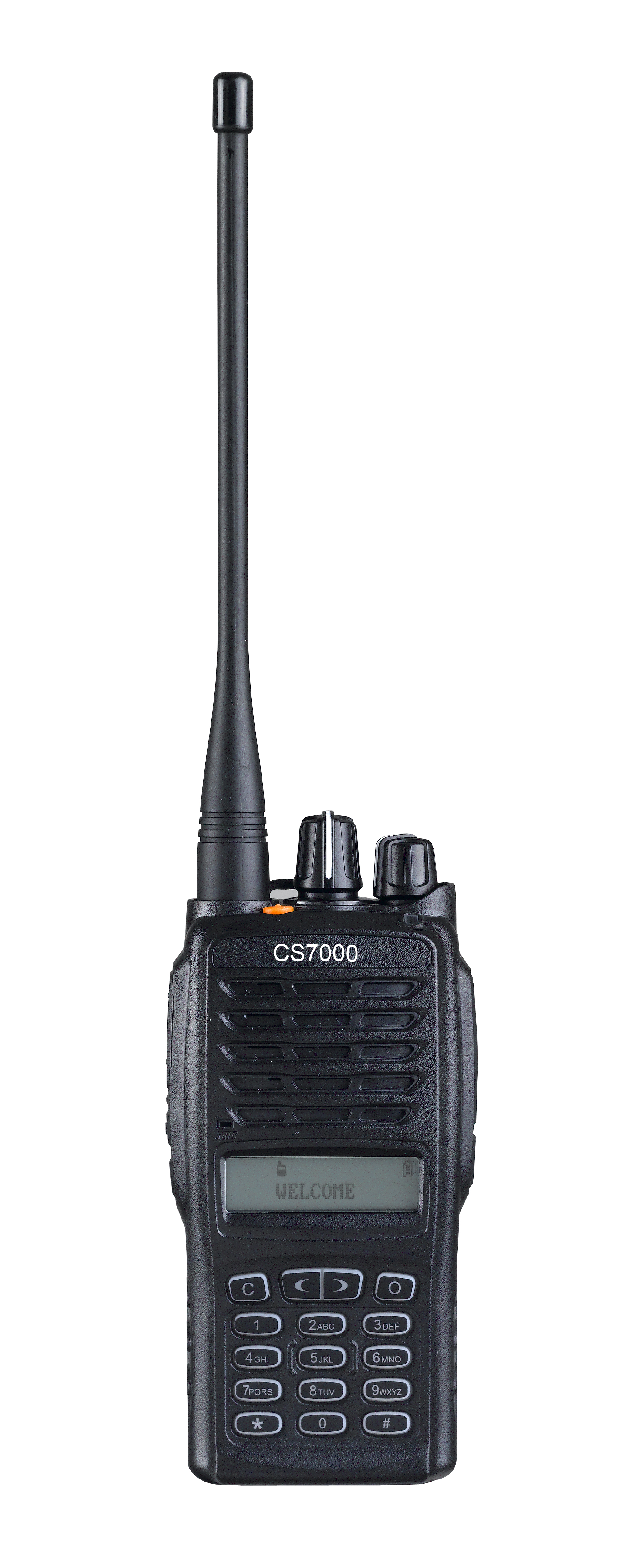 To continue the use of the hardware design of the CS750 it would be necessary to use the C5000 baseband chip. This has a problem in that the C5000 specifications is not accurate and it would be necessary to communicate with the manufacturer of that part to understand the problems and that would only be possible if we understand Mandarin Chinese. To go back to Co-Value for help would not be possible because they do not have the time to help us with that design because of the other work they are doing.
To continue the use of the hardware design of the CS750 it would be necessary to use the C5000 baseband chip. This has a problem in that the C5000 specifications is not accurate and it would be necessary to communicate with the manufacturer of that part to understand the problems and that would only be possible if we understand Mandarin Chinese. To go back to Co-Value for help would not be possible because they do not have the time to help us with that design because of the other work they are doing.
To get around the design issues, a few months ago it was decided to take a completely new approach. The radio would be designed from scratch and would use only key parts that could be bought from companies that speak and understand English. The hardware design is now finished and is being checked by other people to look for mistakes before it is released for prototypes.
Much of the firmware design that was worked on during the past year is still good so we are not starting from the beginning. The hardware design we are using is state of the art and was not possible at the time the original design was started. One of the key features that people say they wanted was a dual band radio. At this time last year it was not possible based on the constraints we were working with and the state of the art at the time. It has been a year since that statement was made and now the state of the art allows a dual band radio to be made.
At the time the design was originally started, the goal was to have the radio do DMR, Analog, and DSTAR. It was never determined if we had the ability to do NXDN, Fusion, P25, and dPMR. We now have the hardware resources to do it all although there would not be a commitment to do anything that does not ship with the radio.
Some of the changes that is being made to the hardware to increase its versatility is as follows:
- Increase the amount of Flash Memory from 64 Megabits (8 Megabytes) to at least 256 Megabits (32 Megabytes).
- Change the Microprocessor from the STM32F4 series to the STM32F7 series. This gives a significant advantage in speed and memory compared to the old part.
- Change the baseband chip. This gives a significant advantage in implementing some of the more advanced features of the various formats as well as implementing new formats.
- Using advanced packaging technology to allow more circuitry to be crammed in the same form factor as the CS750.
The CS7000 will be sold in two versions. The first version will be the standard CS7000 which will be a single band UHF radio. The second version will be the CS7010 which will be dual band UHF and VHF.
A few months after the CS7000 is released the CS8010 which is a dual band mobile radio will be sold. With that radio we have the ability to make it into a Quad Band radio that covers the Amateur Frequencies of 144 MHz, 220 MHz, 440 MHz, and 904 MHz. There is no commitment to the Quad band version at this time because we do not know if people are willing to pay more for that type of radio. For technical reasons, we cannot go much below 100 MHz with the current design. In the future we might consider designing a different radio that covers the lower bands that also allows AM and SSB as well as the standard digital formats.
Future implementations of the CS7000 and CS7010 might have a high quality color display, WiFi, Bluetooth, and GPS. However that is for the future so do not expect that type of radio to be announced anytime soon. Future products will be backwards compatible with the current products so any firmware development will be able to be ported to the future products rather easy.
The radios that are being designed are being designed in a manner that will allow us to make them in the United States if we wanted to. The first versions will probably be made in China.
We will release the hardware design and the source code of the firmware. However Connect Systems will retain control of the copyright of the firmware to prevent our Chinese and other competitors from making knockoffs of the radio and selling at prices below my cost. The amateur community will have the ability to make whatever changes they want to the firmware as long as they only use it on the Connect Systems radios. We might make some other restrictions to prevent our competitors from stealing our designs.
Connect Systems has hired a full time programmer to work on the CS7000 to speed the development of the project. We might encourage other people to work on other aspects of the project in parallel with us.
Codepluggen voor CS700 en MD380 BrandMeister verkrijgbaar!
CS7000 nog geen VaporWare
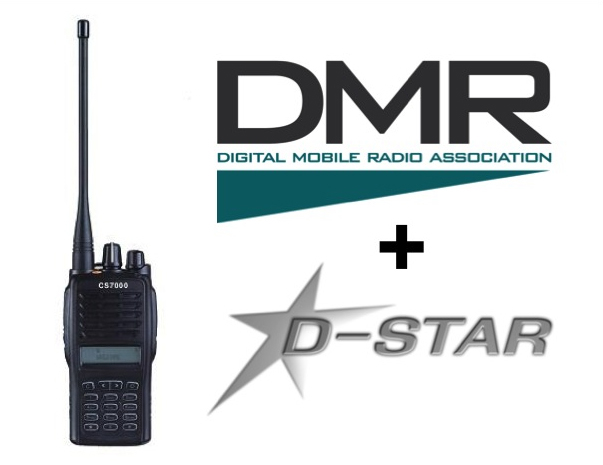 De CS7000, de wonder portofoon van Connect System is nog niet opgegeven. Dat beweerd Jerry Wanger KK6LFS. Hij ontwikkelt nog steeds door aan deze portofoon die zowel DStar, DMR als System Fusion moet ondersteunen. De ontwikkeling had al maanden geleden moeten worden omgezet in de uitlevering aan de mensen die hadden ingeschreven op de aankoop van deze porto. Jerry Wanger schrijft hier het volgende over.
De CS7000, de wonder portofoon van Connect System is nog niet opgegeven. Dat beweerd Jerry Wanger KK6LFS. Hij ontwikkelt nog steeds door aan deze portofoon die zowel DStar, DMR als System Fusion moet ondersteunen. De ontwikkeling had al maanden geleden moeten worden omgezet in de uitlevering aan de mensen die hadden ingeschreven op de aankoop van deze porto. Jerry Wanger schrijft hier het volgende over.
To do the CS7000 I need some things that has to happen sequentially. If the earlier part is not finished then I cannot go on to the next step.
The first part is the hardware. Without the hardware I cannot test the firmware. Depending on the hardware, the firmware might have to change.
I came up with a hardware design over a year ago, soon after the CS7000 was announced. This was based on certain assumptions. One of the assumptions was the speaker microphone design in the CS700/CS750 could be used in the CS7000.
The manufacturer of the CS700 told me my assumption was wrong and could not be done. I did not believe him! However since that time in another context he said it could be done. I am developing the software that will need the same audio processing as the CS7000 and I should have an answer in less than 30 days if it works.
If the audio processing does not work, then I have to redesign the audio section which might be an issue because of my space constraints.
If it works then I can go on to the second phase of the project and that is build a prototype of the radio.
After the prototype of the radio I can then get serious in developing the firmware for the DSTAR portion of the CS7000. Once I finished getting the DSTAR part working, I then go back to the manufacturer and have him integrate the two formats.
After we get a working radio, we then start building production radios unless the hardware was not perfect and then we might have to do multiple versions of the prototypes.
Jerry Wanger KK6LFS
